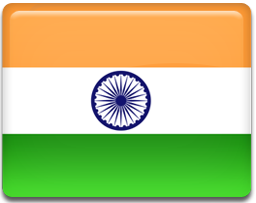Punakha served as the capital of Bhutan until 1955. It’s the winter seat of the Je Khempo (Chief Abbot) & the monk body. It has a temperate climate & its rich fertile valley is fed by the Pho Chu & Mo Chu rivers.
| Dochu-La-Pass |
|
Dochu-La-Pass (10,170 feet), is 16 km far from Thimphu and some 30 minutes drive. You will admire the sterling view of snow-capped Himalayas and the hundreds of "broadcasting" prayer flags. During winter road to Dochula pass is covered with mild snow. Prime attraction to visit Dochula pass is 108 chortens / stupas.The sharp peak that stands at the Dochula pass is dominating the region.
|
| Punakha Dzong |
|
The Punakha Dzongwas known in ancient times as the Druk Pungthang Dechhen Phrodang or "The palace of great happiness". It was built in 1637. This gigantic dzong was damaged 6 times by fire, once by flood and once by an earthquake. It is the second dzongto be built in Bhutan and was the seat of government when Punakha was the capital of Bhutan. Today, the dzong is the winter home for the clergy. The spectacular Kuenrey (assembly hall) in Punakha Dzong is unique which is now open for tourist. Closed in winter months when the monk body is in Punakha.
|
| Chimi Lhakhang |
|
Chimi Lhakhang is a very popular and revered temple that lies on the periphery of the fertile valley of Lobesa, where the borders of Thimphu, Punakhaand WangduePhodrang districts meet. Being dedicated to Lama Drukpa Kuenley, the Divine Madman, the temple is popularly considered to be a temple of fertility.
|
| Wandgue Dzong |
|
It's an easy drive to the very impressive 17th century Wangdue Phodrang Dzong, home of over 200 monks and a monastic school. The dzong is the largest wood roofed dzong in Bhutan and the style and architecture is very grand.
|
| Gantey Gompha & Phobjika Valley (Full Day) |
|
Situated south of the road and east of WangduePhodrang, is GanteyGompa, an old monastery dating back to the 17th century. The gompa, on the valley floor, is the village of Phobjika. This is the winter home of the famous black-necked cranes. The cranes migrate from the high plains of the Tibetan plateau in winter to the milder climate of Phobjika.
|







.png)